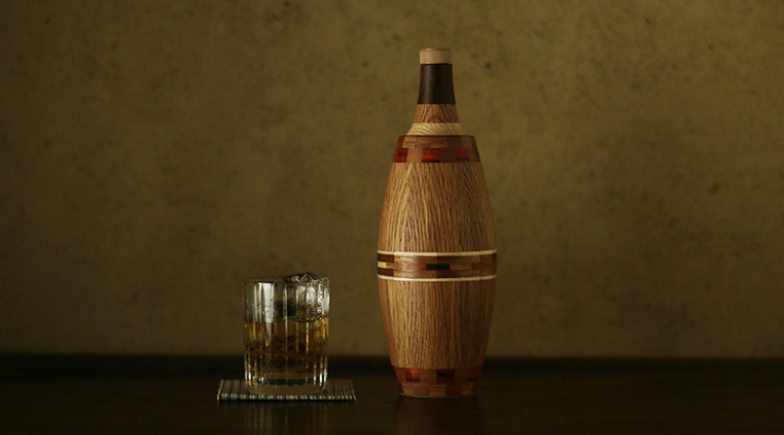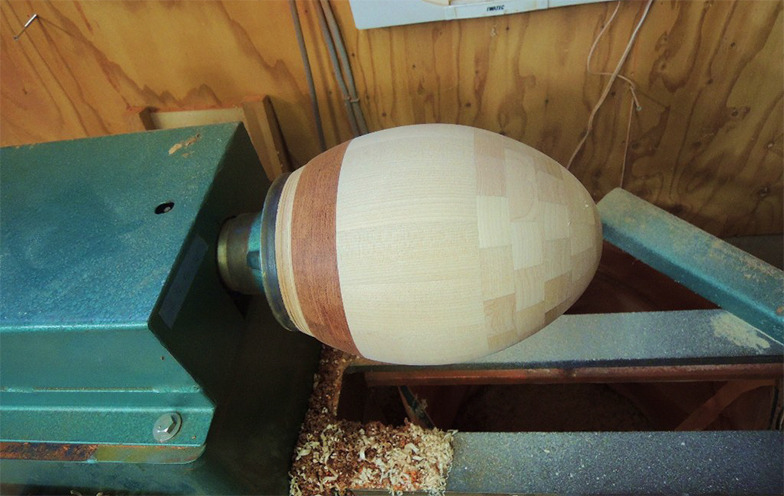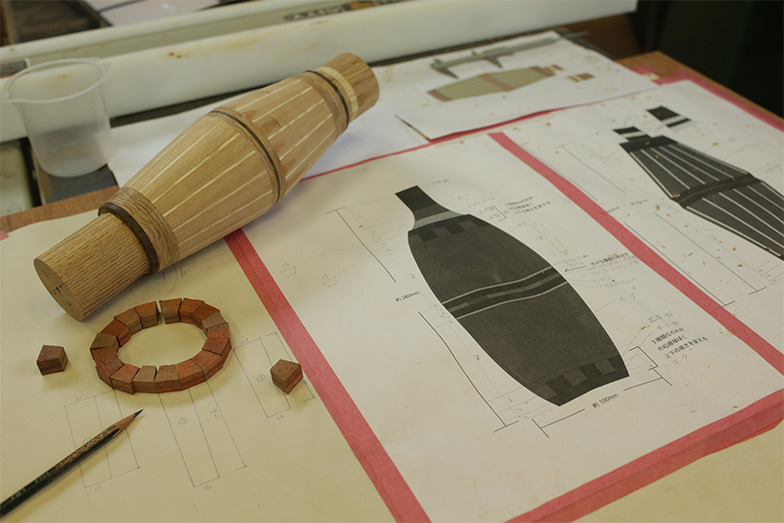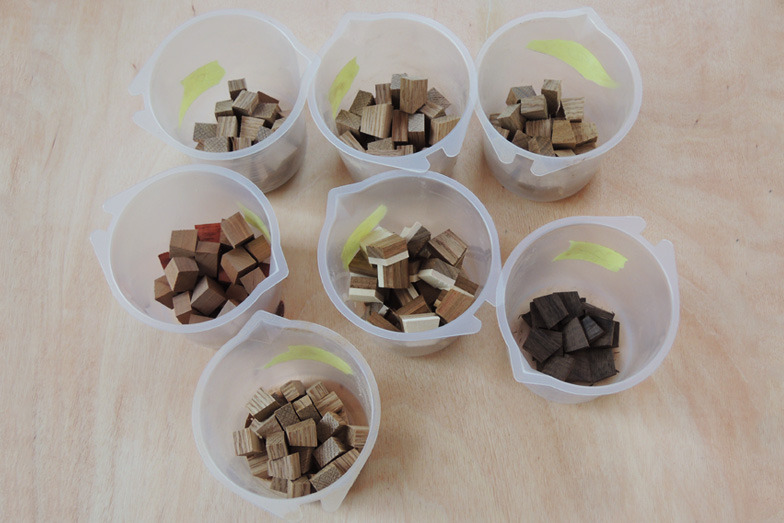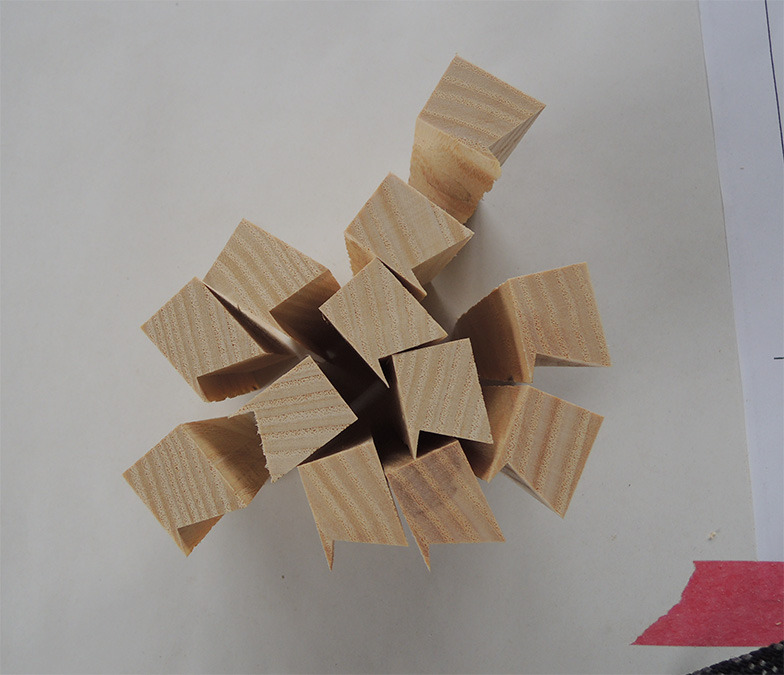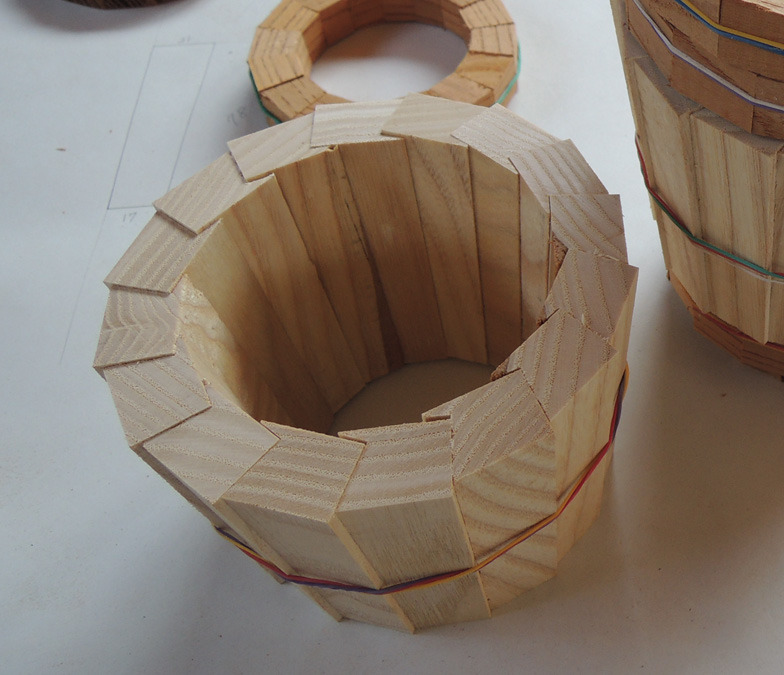From an impressive prototype to a design pursuing even greater beauty
Mr. Uno readily agreed to our schedule and budget. We received an encouraging email stating that once we sent the rough design, they would immediately begin prototyping. Later, images of the prototype arrived. It was astonishing—a wooden bottle of such quality, far exceeding our expectations, even as a prototype.
Next came our in-person meeting. I visited his workshop in Joetsu City, Niigata Prefecture. The prototype used white ash temporarily sourced from the workshop, so we began finalizing the design and selecting the actual materials.
This time, we created a barrel bottle with a curved, elongated form and a bottle inspired by the Shaker style with a linear image. The barrel type primarily uses oak wood, while the Shaker type uses cherry wood. We also incorporated other woods to create a design that allows you to enjoy the texture and color of the wood.
For the Shaker-style bottle materials: - Ivory (vertical thin lines and center neck section): White ash - Earthy yellow (vertical elongated section): Cherry wood - Light brown (top, center, and bottom of body): Laurel - Brown and dark brown: Oak
For the barrel type, the materials are, from the top of the neck: laurel, oak, white ash. For the body, from the top: 1st layer oak, cherry; 2nd layer rosewood, cherry; 3rd layer (long vertical piece) oak. Fourth layer (thin line): White ash. Fifth layer: Paulownia. Sixth layer: Zelkova, white ash, laurel, bubinga, paulownia, rosewood. Seventh layer: Paulownia. Eighth layer (thin line): White ash. Ninth layer (vertical strip): Oak. Tenth layer: Rosewood, cherry. Eleventh layer: Oak, cherry. The design became extremely intricate due to meticulous attention to detail.
About the Construction Method
Joinery generally refers to woodwork assembled without metal fasteners. It involves joining boards to boards, boards to rods, or rods to rods, shaving boards or square timber, and combining them to create sturdy joints for making boxes, shelves, and other items.
Furthermore, this project incorporates woodturning—a technique popular overseas where a lathe machine spins the material to freely shape it from a solid block. High-speed woodturning demands sharp cutting tools, sustained concentration, and considerable skill.

Woodturning Techniques
I had the opportunity to witness the lathe process firsthand. The woodturning operation, carving shapes from a solid block of wood, unfolded in the quiet workshop. Only the sound of the lathe spinning and the sound of the tool cutting into the wood echoed, creating a tense, serious contest between Mr. Uno and the wood. This piece can be described as the fusion of two techniques: marquetry and woodturning.
Techniques reminiscent of joinery are employed: carefully considering the grain patterns to assemble the wood into a 16-sided shape, cutting at precise angles, and gradually shaving away material to achieve a seamless fit.
The components in the image above were processed using the Yahazu-hagi technique, a type of "hagi-te" (joining) method that involves creating V-shaped interlocking grooves and ridges.
This increases the bonding surface area, enhancing adhesive strength. The shape minimizes misalignment during assembly even with adhesive applied, allowing components to be pressed together tightly without gaps for a stronger joint. It also prevents collapse due to centrifugal force during high-speed lathe turning.
Upon Completion
This project utilized several joinery techniques, but there are many more, offering a glimpse into the depth of traditional craftsmanship. These traditional methods continue to evolve even today, and the finished piece truly shone.
I am filled with gratitude toward Mr. Uno, who even crafted new tools to solve my unreasonable challenges, overcoming them with his ingenuity, technical skill, and sheer determination. Thank you, Mr. Uno. Finally, while traditional crafts may seem rigid and intimidating, they were actually free, enjoyable, and approachable. I hope to take on another challenge like this again someday.

Finished Product (Shaker Type)




